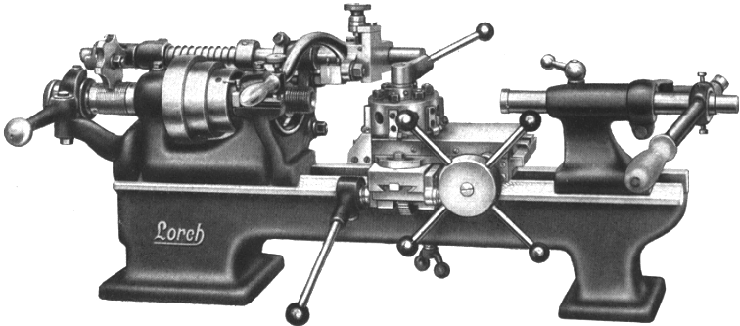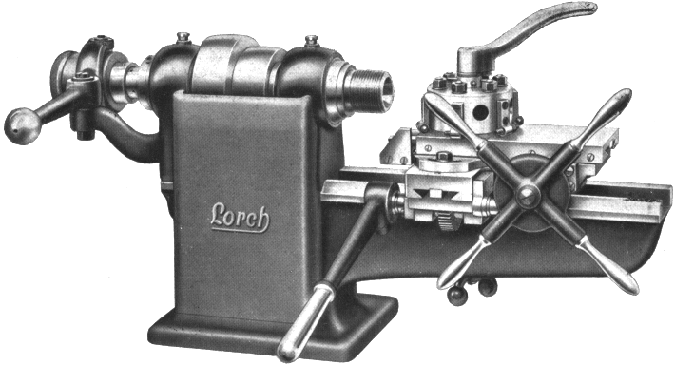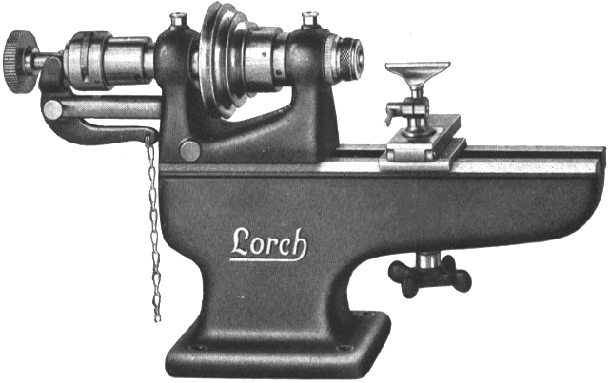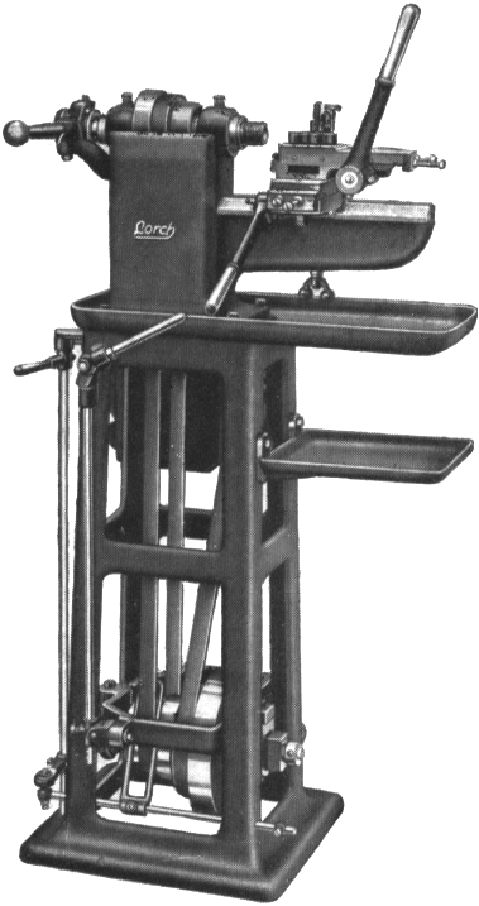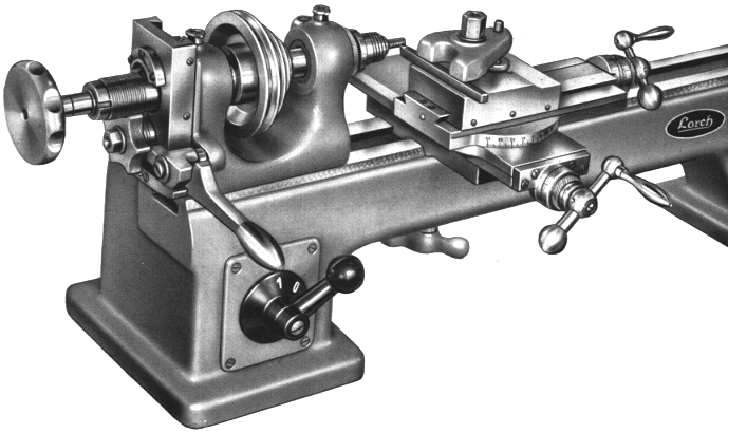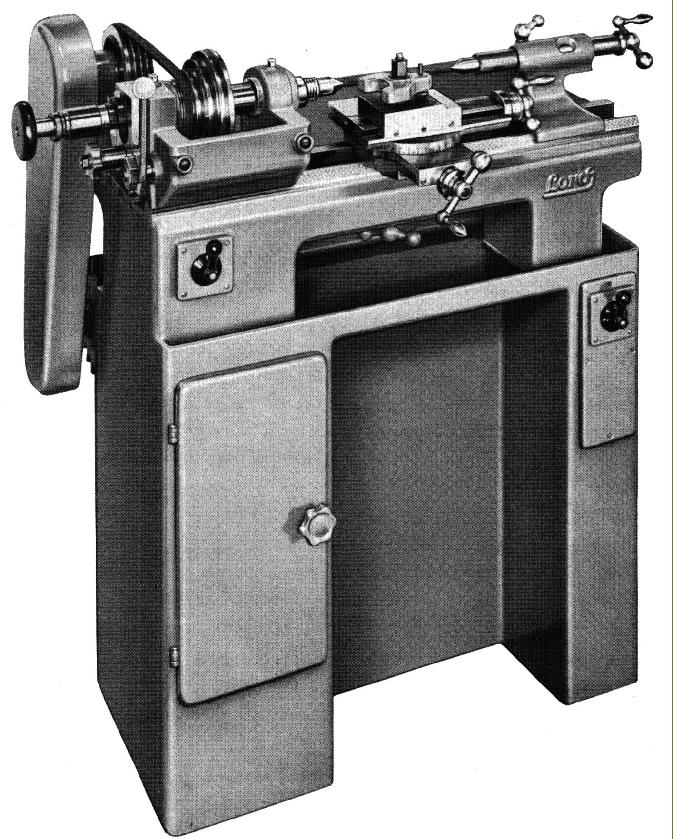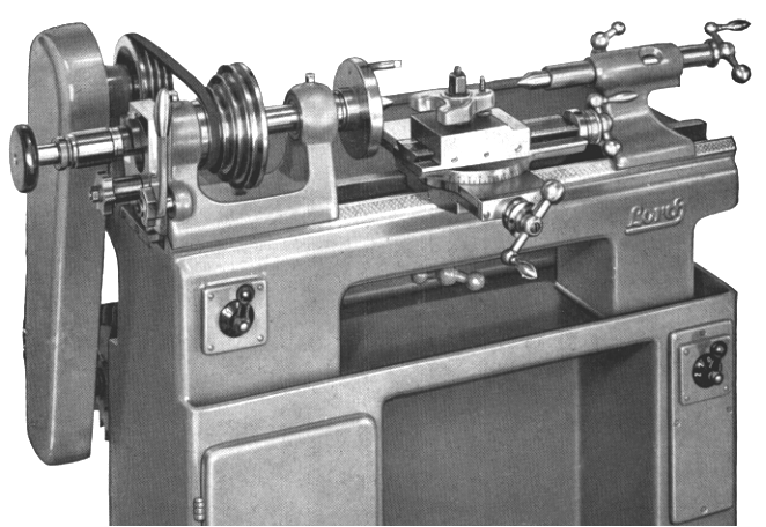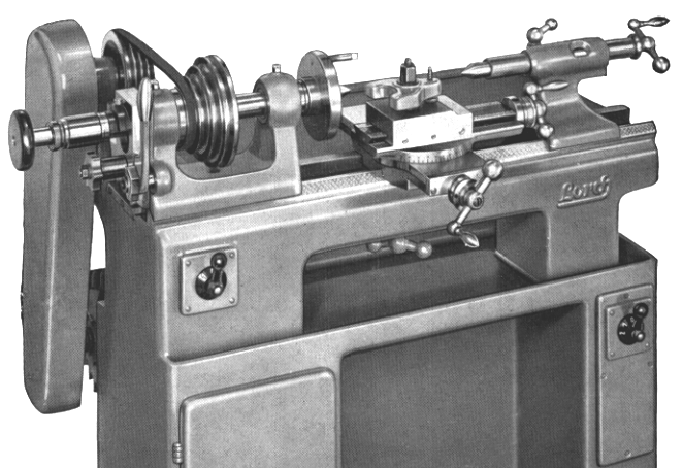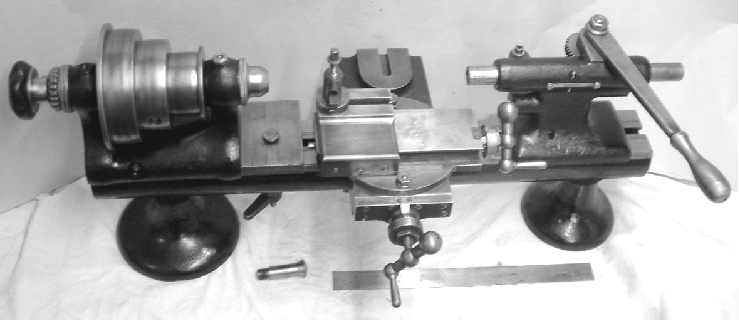|
LORCH Precision Thread-chasing Lathes Type P
Models LLPV, AIIP, BVIP and B-VI-PO-K
With a system also used by, for example, Wolf-Jahn, Karger and Auerbach, Lorch lathes with a headstock-type, sliding-spindle thread-chasing system were designated "P" Types - and designed to permit the perfect reproduction of short but very accurate threads of the type frequently used in optical, instrument and research workshops. In the Lorch design the master thread - or hob - was carried on the outboard end of the headstock spindle and engaged by a star-shaped follower which carried six different thread forms. The headstock, under the influence of the follower, was arranged to slide axially so that a thread-forming tool, held in the appropriate position, would cut a thread of exactly the same pitch. The follower could be disengaged at any point, or allowed to run off the master thread - hence allowing a degree of automatically positioning to be set up for each job.
Three different sizes of plain lathe could be fitted with the system, the LLPV, AIIP and BVIP with, respectively, centre heights of 2.5", 4" and 4.75", spindle bores of 10, 12.5 and 20 mm, spindle threads of M20, M27 and M39 and weights (bare machine) of 48 lbs, 101l lbs and 186 lbs.
Also was available with between centre capacities of 9 or 13 inches, the LLPV was driven by a 0.35 HP 2800 rpm motor, had 6 spindle speeds of 450, 630, 900, 1250,1800 and 2500 rpm.
A much more robust machine, the AIIP was available with a single between-centres capacity of 16 inches and, with the recommended 0.67 HP 1400 rpm motor, spindle speeds of 285, 400, 570, 800, 1140 and 1600 rpm.
Largest of all, the BVIP could be ordered with either 20 or 30 inches between centres and, using a 1.0 or 1.34 HP 1400 rpm motor had spindle speeds of 250, 350, 500, 700, 1000 and 1410 rpm.
Sliding-spindle lathes were not a Lorch invention; B.C.Ames in the USA had such a lathe is their lists during the early part of the Twentieth Century. However, its use was not for screwcutting but to allow collets to close onto work without drawing them back - and so permit precise turning to a shoulder or into a recess during production work--a system later fully developed by various makers of "Swiss Autos".
|
|
